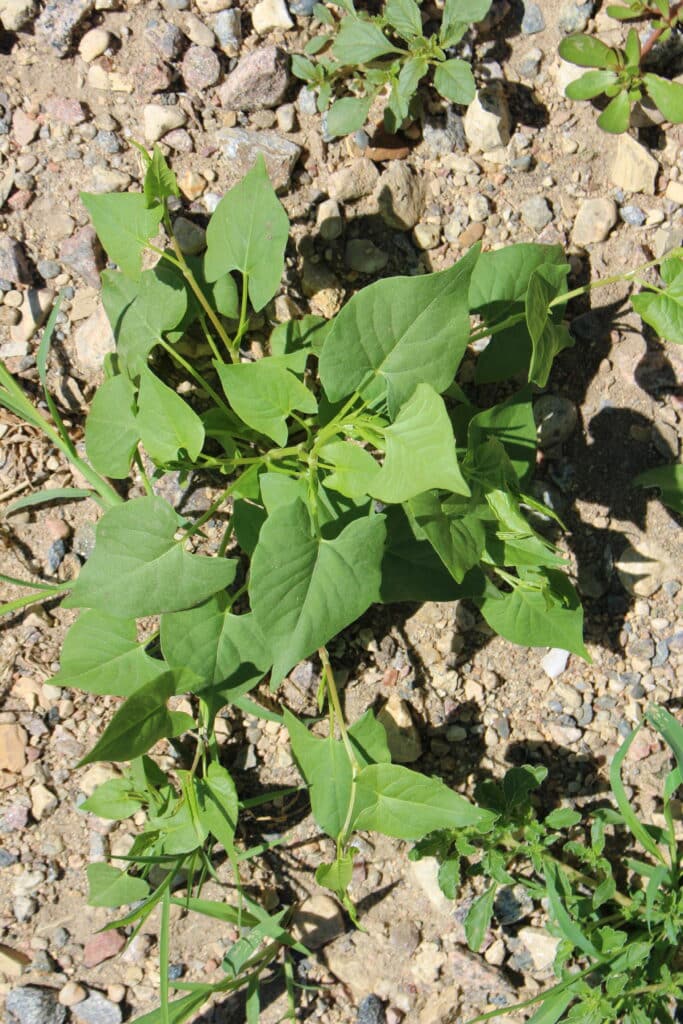Key Result
Effective herbicides remain a critical part of integrated weed management. Steps taken now to increase diversity in the management strategy, while herbicides are still effective, is crucial to maintaining control of weed populations in the long term.
Project Summary
Overview
Herbicide resistance is increasing in Western Canada and around the world. While herbicides are still mostly effective, ongoing research has tried to identify other tactics and systems to include in an integrated weed management (IWM) approach.
This five-year project builds on previous research conducted by AAFC research scientist Neil Harker, who looked at IWM tactics for wild oat. This project investigated similar tactics, added chaff collection as a harvest weed seed control option, and branched out to wild oat, wild buckwheat and locally-important broadleaf weeds at each location.
This study compared weed populations for treatments that included diverse crop rotations (canola-wheat, fababeans-barley-canola, peas-winter wheat-canola, silage barley-winter triticale-silage barley, silage barley-fall rye-canola, alfalfa-alfalfa-alfalfa), with and without herbicides (various combinations), typical or increased seeding rates, and with and without chaff collection.
In year one, trial areas were seeded to wheat at a 2x seeding rate, treated with zero herbicides, and seeded with weeds to allow populations to establish. The middle three years were given the above crop rotations. For the final year, trials areas were again seeded to wheat at a 2x seeding rate with zero herbicides.
Results
Wild buckwheat populations were not significantly affected by any of the crop rotations or integrated weed management techniques tested on average across locations. It is likely that the twining/climbing nature of buckwheat allows it to be less affected by the IWM strategies used in this study, which rely heavily on increased competitiveness to affect weed populations. Effective IWM on species such as buckwheat and cleavers will require new techniques with better efficacy.
Wild oat results were not as promising as results from Neil Harker’s previous IWM research on wild oat. Wild oat densities at most locations would be unacceptable in a commercial field. One possible source of variation between the Harker and Tidemann (the current research) studies is the initial wild oat population when IWM strategies are implemented. It’s possible that IWM strategies are less effective on high weed populations. This is an area that requires more research.
One clear result is that grass weeds, and in particular wild oat, tend to be more competitive than the broadleaf weeds. The lowest broadleaf weed biomass was recorded in some of the low diversity, no herbicide treatments. This is a side impact of high, and competitive, wild oat populations in these treatments, which reduced the size and impact of the broadleaf weeds.
Conclusions
The biggest conclusion drawn to date is that the IWM methods previously studied for wild oat control, including increased seeding rates and inclusion of a winter cereal or barley silage, may not always prove effective for wild oats or for other species. Researchers want to understand why control levels in this study were so much lower than those observed in the Harker et al. (2016) study. If, as the researchers currently suspect, initial wild oat densities at the implementation of the integrated weed management strategies significantly affect control, this could critically impact the way farmers adopt these strategies.
Early application of IWM could be key because waiting until resistance establishes (and densities increase) could result in management failure and loss of control.
Western Canadian farmers also need additional IWM tactics. IWM systems studied to date are not a solution to herbicide resistance. They can aid in management of the weeds, but increasing diversity in the management strategy early, while herbicides are still effective, is crucial to maintaining control of our weed populations long term.






